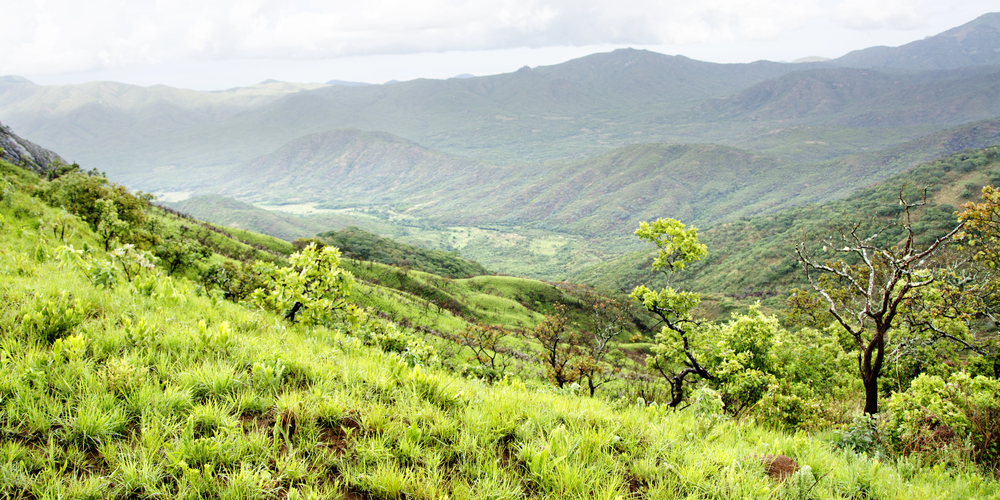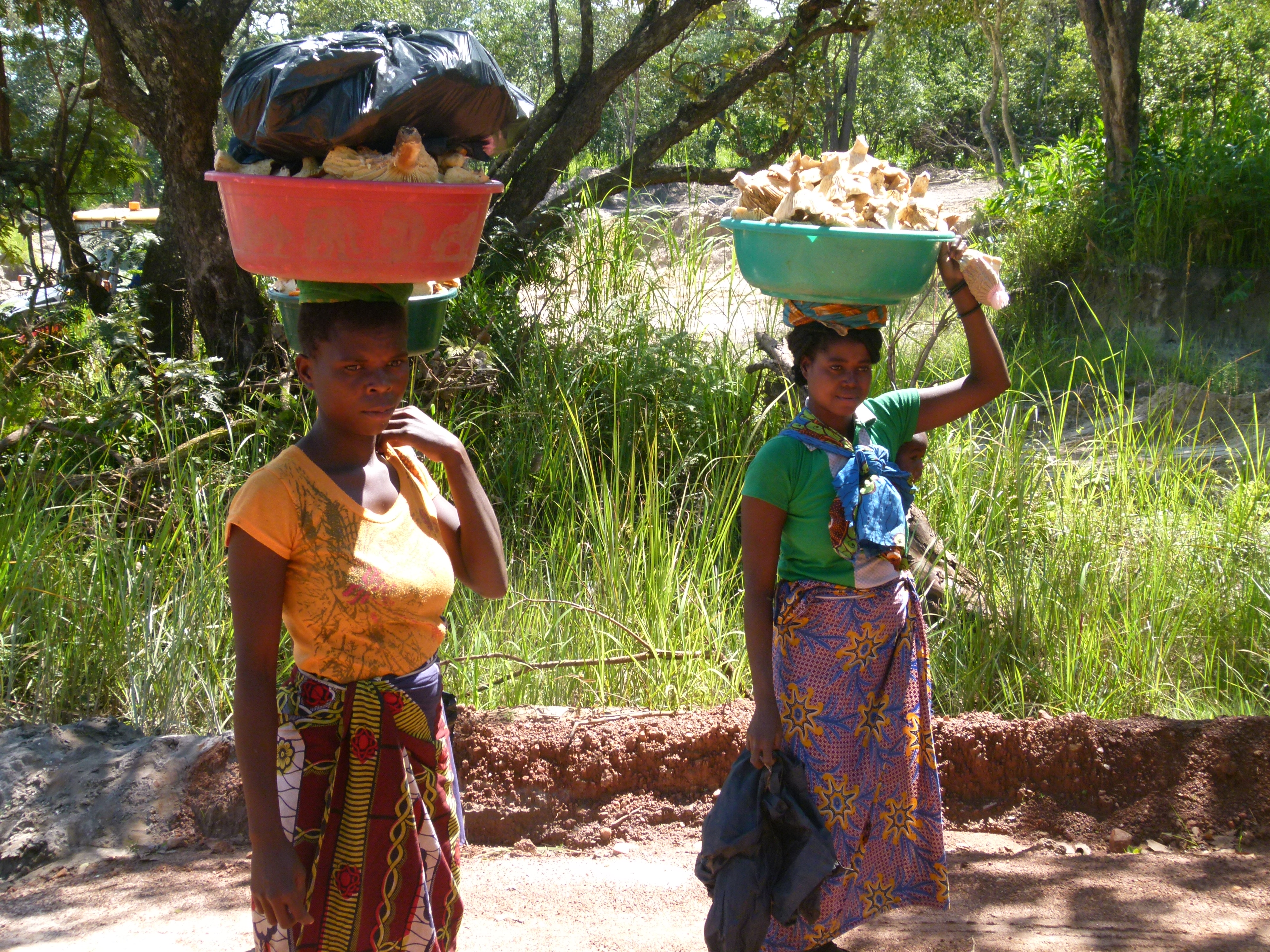poverty reduction

When thinking of forests, don’t forget the value of trees
Across the globe, demand for wood products is increasing and expected to quadruple by 2050. This trend is exacerbating deforestation and forest degradation. But it also presents an opportunity for a better approach to farming and managing forests.
A new report, Harnessing the Potential of Private Sector Engagement in Productive Forests for Green Growth, shows how sustainably harvesting wood products can help meet growing demand while providing jobs, mitigating climate change and conserving primary forests.
While it’s well known that trees and forests provide an important carbon sink, the carbon stored in forest products is often overlooked. Forest products and materials such as those used for construction and furniture store carbon for decades and even centuries.
Choosing wood products over other non-renewable materials, such as concrete and steel for construction materials, also offers climate benefits. Concrete and steel require fossil fuel to produce, making these alternatives much more carbon intensive. For example, producing a concrete wall puts 15 times more carbon dioxide into the atmosphere than making a wooden one.
The new report, funded by the Climate Investment Funds (CIF) and the Program on Forests (PROFOR), examined the economies of six countries - Ethiopia, Colombia, Mexico, Mozambique, Peru and Vietnam - to estimate the potential climate mitigation benefits from forest-based supply chains. Together, the six countries could sequester more than 150 million tons of CO2e (see table below) by 2030 with adequate investments in forest restoration and the increased production and use of wood products. Such an approach could help countries meet their climate commitments under the Paris Climate Agreement.
Investing in wood supply to meet demand through landscape restoration and other means also brings benefits, especially by creating new forest industry jobs in rural areas. Potential employment benefits in the six countries studied are depicted in the table below. In addition, projected demand for wood products could encourage the private sector to make long-term investments in productive forests, plantations, and wood processing.
Moving forward on sustainably harvesting forests is a delicate balance between production and conservation. If promoting forest products leads to deforestation, then climate mitigation is lost. To get the balance right, governments must create an enabling environment through better law enforcement and governance. That would help to protect and more sustainability use forests, improve land tenure, and provide the incentive mechanisms to attract private sector investments. Plantations will be key for renewable energy - sustainable charcoal and wood chips - in the future. Private investors, rural communities and forest owners also need technical assistance to help with forest management and production, as well as easier and quicker access to market information.
“Investing in sustainably managing and using forests offers longer-term benefits over the frequently under-productive and disorganized use of many forests today,” says Gerhard Dieterle, program manager for the World Bank’s Forest Investment Program. “As found in this study, doing so would unquestionably benefit people and the planet.”
Click here to watch the video on the interview with the authors.
For stories and updates on related activities, follow us on twitter and facebook , or subscribe to our mailing list for regular updates.
Last Updated : 06-16-2024

Share
Related Links
Poverty-Forests Linkages Toolkit
New tool to deliver swifter, better data on forests-poverty linkages
The role of forests in achieving the twin goals- A case study for the Phillipnes
Bringing Forest and Poverty into Focus in Argentina
Attachments
Forest contribution to poverty alleviation evidence map.pdf
Keywords
Understanding Forests’ Contribution to Poverty Reduction
PROGRAM SUMMARY
The overarching goal of this project is to support the World Bank Group's efforts to promote sustainable poverty reduction in forests and to work with governments and the international community to promote the use of forests and their resources to reduce poverty and boost shared prosperity.
CHALLENGE
While knowledge is increasing about forests as a source of day-to-day subsistence and as a safety net in times of need, much less is known about the extent to which forests can provide a pathway out of poverty. Currently, there is no systematic understanding of how forests may help the poor move out of chronic poverty and/or improve their current economic circumstance.
Knowledge gaps regarding the role of forests in poverty alleviation are often conceptual, but even more importantly, empirical. Frameworks such as those focusing on ecosystem services, or those elaborating different types of contributions of forests to human welfare can be used to structure analyses of forest-people linkages. But there are also critical knowledge gaps about forests as a source of employment and pathway out of poverty challenges in collecting relevant information on the contribution of forests to household well-being. Difficulties of measurement, valuation, and enumeration thwart efforts to capture this contribution. In particular, the remoteness of many poor, forest-reliant households and the length of time required to complete many surveys are barriers to collecting adequate information, which contributes to the lack of consolidated knowledge available on the linkage between forests and a pathway out of poverty.
APPROACH
This program employs four pillars that build on earlier efforts by PROFOR and other partners and aims to: (i) consolidate what is known about forest-poverty linkages, (ii) generate new knowledge on this interaction, (iii) improve how we measure household use and dependence of forests, and (iv) share these results with a broad set of policy makers and practitioners. The work will be conducted in close collaboration with an external reference group of advisory experts and key institutions that includes representatives from the organizations, such as the Center for International Forestry Research (CIFOR), Food and Agriculture Organization (FAO), International Union for Conservation of Nature (IUCN), the International Centre for Research in Agroforestry (ICRAF), the Forest Stewardship Council (FSC), International Tropical Timber Organization (ITTO), International Union of Forest Research (IUFRO), as well as universities, policy institutes, foundations, and non-governmental organizations (NGOs).
With the four pillars guiding the work, the main program outputs will be the following:
(1) A knowledge review, focusing on synthesizing evidence on the impacts of forestry policies and programs on poverty reduction in evidence maps, and to explore this evidence in an in-depth knowledge review.
(2) A conceptual framework will be developed, including a common set of definitions and core forest-poverty linkages to be explored.
(3) Country studies, bringing together and consolidating already on-going projects. The program will serve to streamline these studies as far as possible, to maximize comparability and learning.
(4) Development and field testing of the Forest-SWIFT (formerly called forest-poverty app) in Tukey, Argentina, and Mozambique (tbc), building on ongoing work on the forestry module of the Living Standard Measurement Study (LSMS).
(5) Dissemination and outreach will be targeted to specific internal and external users and audiences, and will include setting up a reference group with external experts.
For stories and updates on related activities, follow us on twitter and facebook , or subscribe to our mailing list for regular updates.
Last Updated : 06-16-2024








